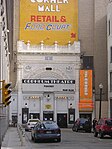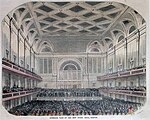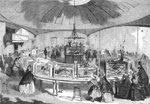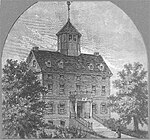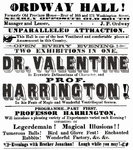Wesleyan Building, Boston (Bromfield Street)
Buildings and structures in BostonCommercial buildings completed in 1870Financial District, Boston

The Wesleyan Building (est.1870) of Boston, Massachusetts, is located on Bromfield Street in the vicinity of Downtown Crossing. Architects Joseph Billings and Hammatt Billings designed it as the headquarters of the Methodist Boston Wesleyan Association. Tenants have included the New-England Methodist Historical Society; Zion's Herald; Woman's Foreign Missionary Society of the Methodist Episcopal Church; Boston Lyceum Bureau; Boston Theological Seminary; Boston University School of Law; Emerson College of Oratory; and Hudl. By 1912 the Methodists had moved to a new building on Copley Square.
Excerpt from the Wikipedia article Wesleyan Building, Boston (Bromfield Street) (License: CC BY-SA 3.0, Authors, Images).Wesleyan Building, Boston (Bromfield Street)
Bromfield Street, Boston Downtown Boston
Geographical coordinates (GPS) Address Nearby Places Show on map
Geographical coordinates (GPS)
| Latitude | Longitude |
|---|---|
| N 42.356561111111 ° | E -71.060472222222 ° |
Address
Bromfield Street 32
02102 Boston, Downtown Boston
Massachusetts, United States
Open on Google Maps


